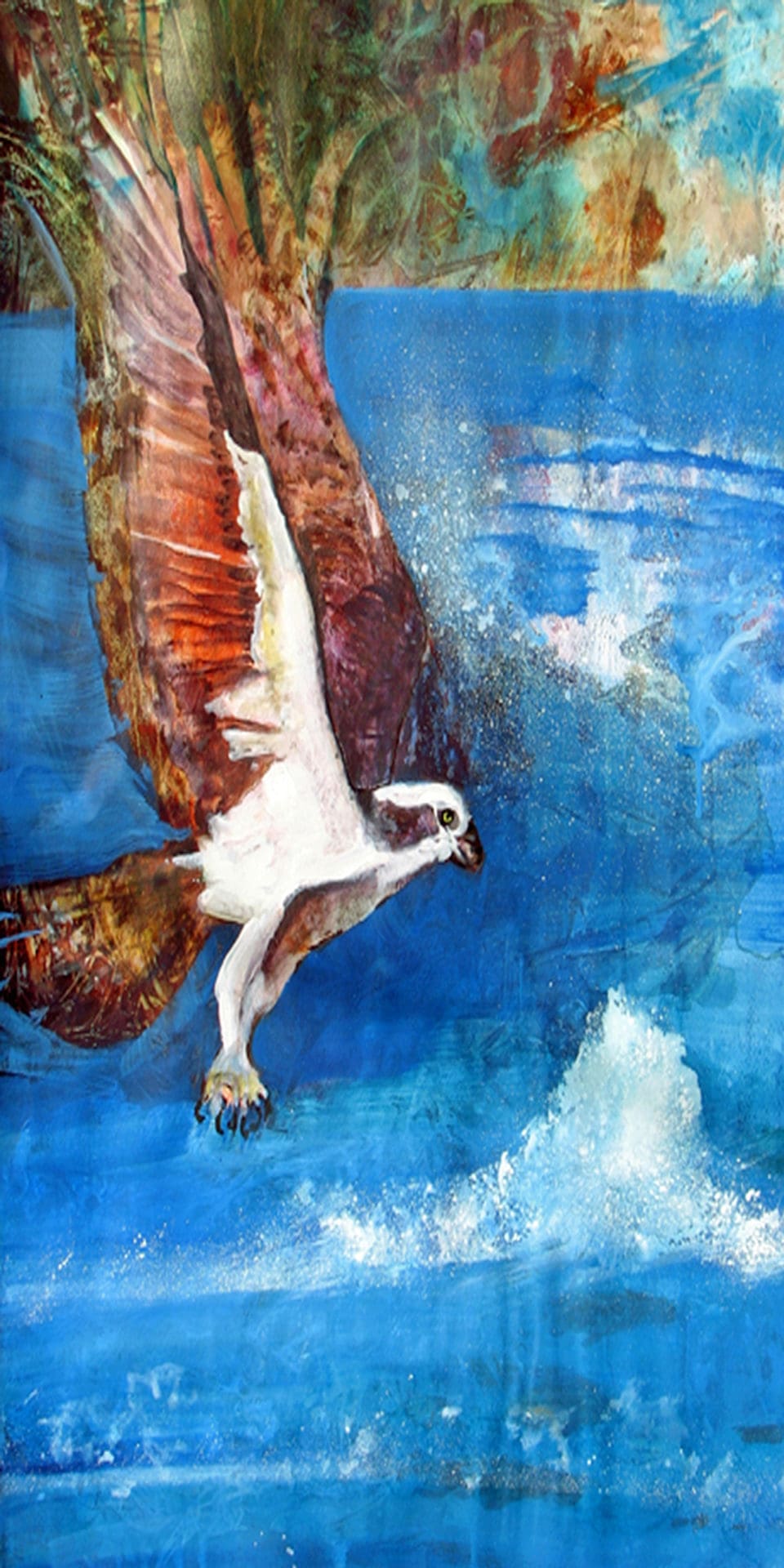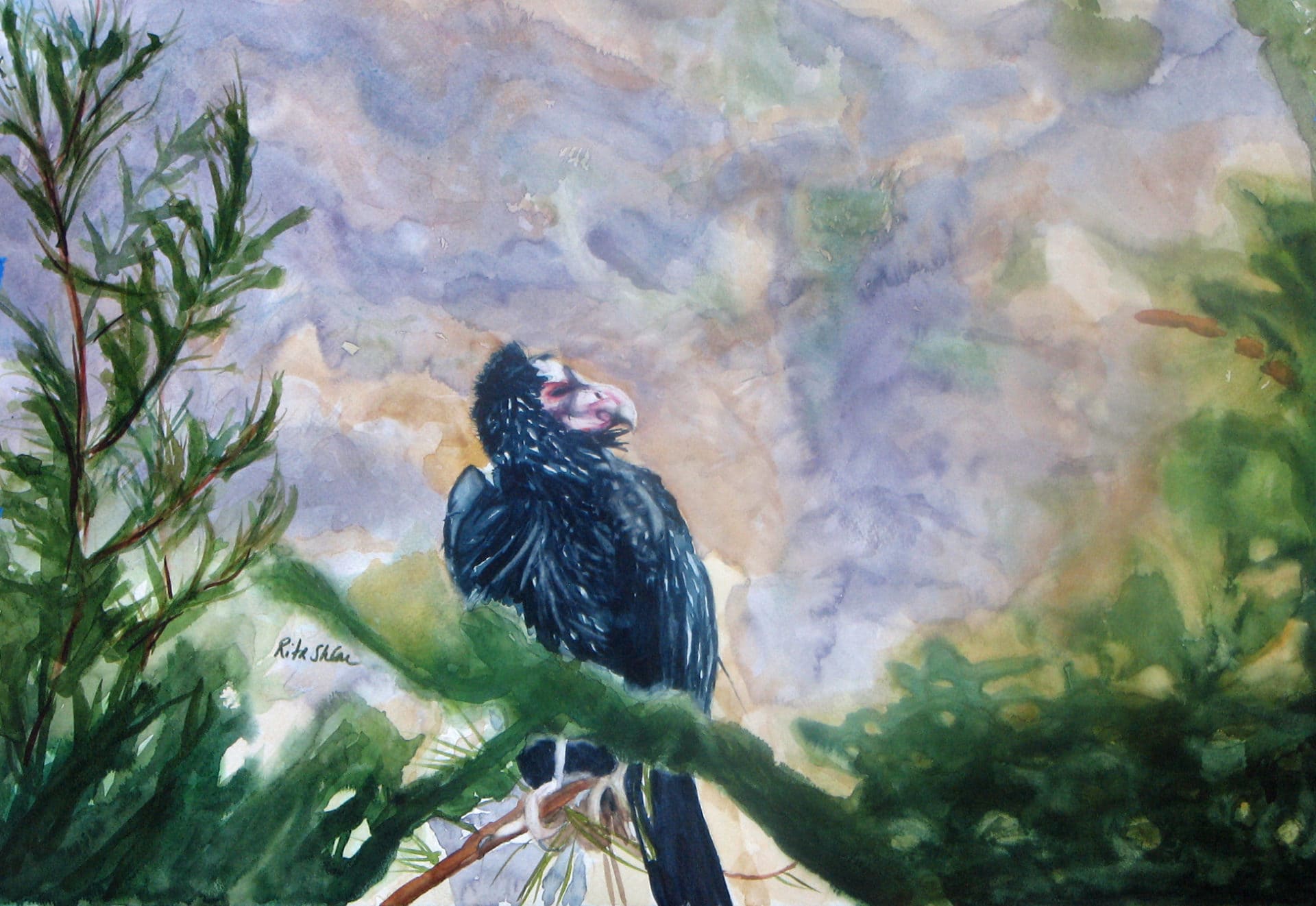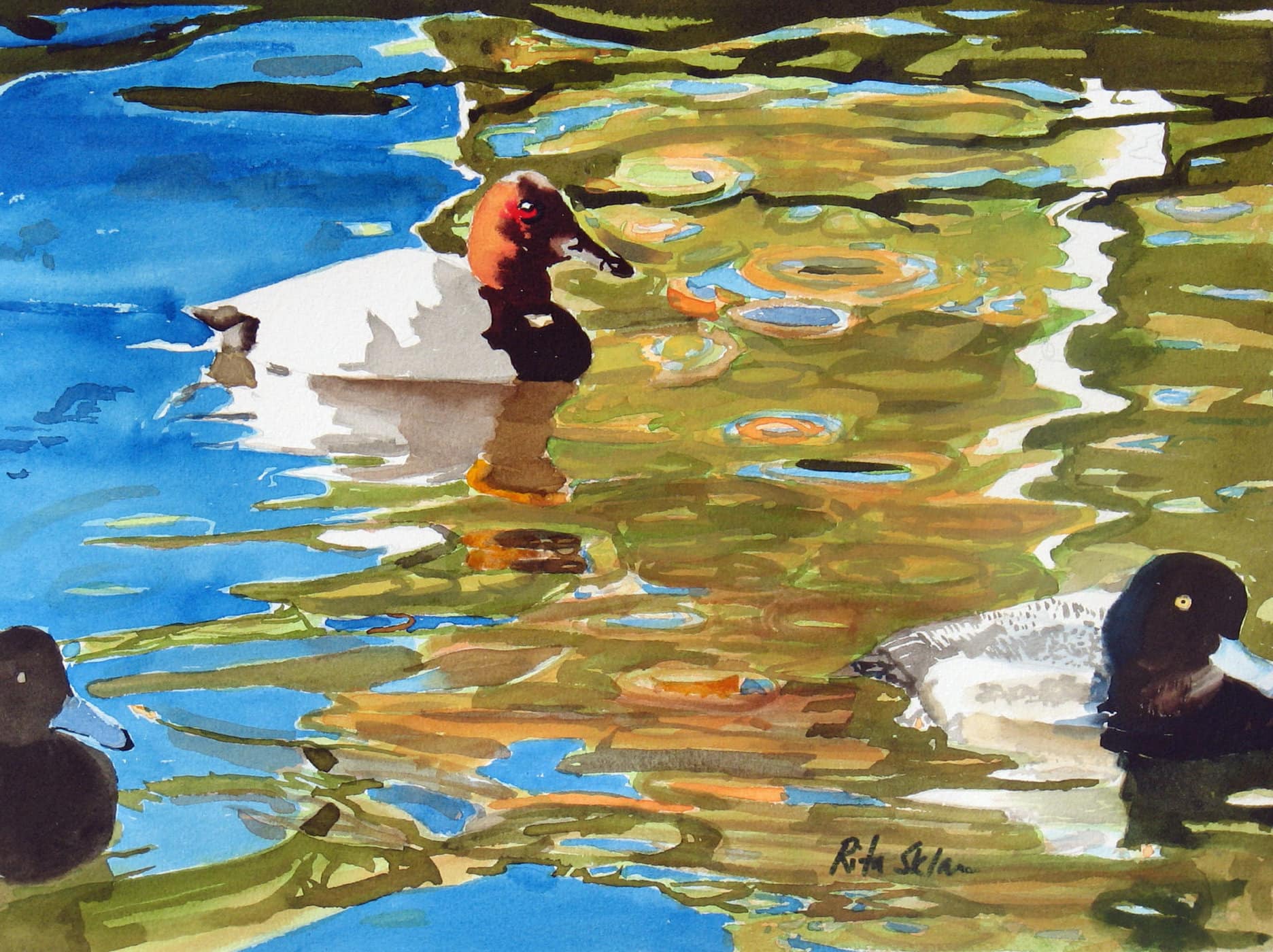An Online Bird Art Show: “Wild Things”
By Rita Sklar
I have been a member of Golden Gate Bird Alliance since 2004. I have gone on many guided bird walks, attended meetings in the East Bay, and occasionally participated in overnight events such as Dan Lassen’s park adventure. One very memorable overnight trip was one to Yosemite, where our group had a night time search for the Great Horned Owl (we found the owl, by the way). I’ve learned so much from the devoted leaders of GGBA. My love of birds ties into my work as a painter. I am an artist who explores the dimensionality of vanishing species and traditions. I depict wildlife and people reverently, using maps in unique ways to convey the importance of place.
My paintings speak to the fundamental dichotomy of the beauty and value of wildlife as well as the longing to remove the things that threaten them. I hope to reflect balance between the reality of representational shapes, forms and abstract backgrounds. My affection for wildlife often reveals the dual violence and tenderness of our times. I search for new ways to express the singularity and diversity of our fragile world.
I have been very lucky to showcase my work at many galleries and art spaces over the years. Earlier this year, I was scheduled to have a solo show at the Hayward Interpretive Center. The show was called “Wild Things.” But like many events this year, the in-person event was canceled due to the Covid-19 pandemic. The good news is that the Hayward Arts Council offered me an online showing of ten of my bird paintings. I am pleased to share this with you all. Sharing my work is my little way of giving back to GGBA.
You can see these paintings by clicking here.
I will tell you more about my show and share some personal stories and observations behind the birds I have painted.
“Wild Things” features an exploration of the wonders of nature and the decline of many of our beautiful creatures, especially birds. My paintings are a mix of abstraction and realism. My goal is to capture the subtle mood of the mystery of nature. Compositions resonate with color and vibrant shadows, and my unique style imparts a sense of weight and structure to the paintings, not usually associated with watercolor pieces.
The goal of my show was to highlight the birds of the Bay Area and underline the importance of paying attention to their environmental needs. Birds are important indicators of the overall health of our environment. Like the proverbial canaries in the coal mine, birds send an urgent warning about threats to our water, air, natural resources, and climate.
Severe bird declines are the result of lost habitat, invasive species, polluted water, and changing climate. Efforts to restore nesting and feeding grounds, ban pesticides and halt development in sensitive wetlands and other migratory stopovers have brought back the California Brown Pelican, the Peregrine Falcon, and the Bald Eagle.

Fishing

The Osprey is a unique bird that is unmistakable when seen at close range. It is the only species in its family, and it is found worldwide. The Osprey’s talons are uniquely adapted for catching and carrying fish: their surfaces are rough, and their toes can be held with three forward and one back, or with two forward and two back, an arrangement seen in owls but not in other diurnal raptors. We are fortunate to be able to see Osprey through GGBA’s Osprey Cam. (Please note: the cameras are currently down for maintenance).
California Condor

The California Condor is a New World vulture, the largest North American land bird. It became extinct in the wild in 1987, but has since been reintroduced to northern Arizona and southern Utah, the coastal mountains of central and southern California, and northern Baja California. Among the rarest and most imperiled birds in the world. Captive breeding programs resulted in an increase from 22 birds in 1987 to almost 500 birds today.
I remember the day we went looking for condors with a volunteer guide who had an antenna that could pick up the location of a condor introduced to the wild. We rode around and around Big Sur in a caravan of vehicles following the antenna. After several hours of searching, we discovered our elusive bird. He was right by the side of the road perched in the low branch of a tree. So exciting!
Western Snowy Plover

Protection efforts for breeding birds have halted the decline and can be attributed to habitat restoration, predator management, leash laws, symbolic fencing, and controlled off-road vehicle use. I first saw Western Snowy Plovers from a distance through a scope at an Audubon sponsored event, as their breeding territory was off limits to the public. A friend of a friend had taken photos and offered them to me. I was able to recreate a scene in my paintings using those different images. I painted this piece using watercolors and acrylics.
Canvasback and Scaups

Global warming is causing dramatic changes in the Greater Scaups’ tundra breeding grounds. Scaups are sensitive to oil spills and are among the top ten birds in decline. The breeding population of Scaups has declined steadily since 1980, dropping from about 6.3 million birds in the 1970s to fewer than 3.5 million in 2007. Conservation and game management has had positive results in protecting Canvasbacks and Scaups, and they are certainly in no danger of extinction. Nonetheless, despite a growing body of research, we are still not sure what can be done to rebuild Scaup populations and whether their decline indicates larger environmental problems.
Scaups were among the first birds I learned to identify when I first started bird watching while walking around Lake Merritt in Oakland for exercise. At that time, I became aware of the migration pattern and how the duck population changed throughout the year. Soon I was bringing my birding books and pamphlets to the lake. I would stop and consult the images to determine the names of the birds I was seeing. That was very exciting, even if it did interfere with my exercise routine!
About Rita: Award-winning artist Rita Sklar is a Signature member of the California Watercolor Association—and an avid birder. Her awards include a special prize from The San Francisco Flyway Festival for her “Winged Migration in Black and White.” She received a Distinguished Artist award from the National Museum of Women Artists. Sklar’s wildlife paintings have been featured at the Lindsay Wildlife Museum, the Oakland Zoo, and Tilden Park Education Center as well as Mountain View Center for the Arts, the CA State Building and the Bay Model. Sklar received a commission from the Alameda County Art Commission and two grants from the Oakland Cultural Arts Fund. Her paintings have been selected into national shows by acclaimed jurors. She has received over twenty-five awards for artistic excellence. To learn more about Rita and her work, please go to her website at www.ritasklar.com. If you would like to purchase some of Rita’s work, including giclee prints of paintings of the Black-crowned Night Heron, Sandhill Cranes, Stilts, and Pelicans, please click here: ritasklar.com/giclee.htm
